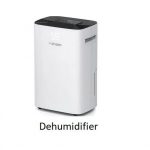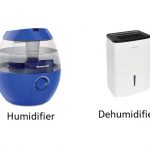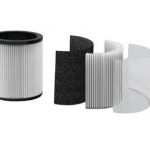Do Robot Vacuums Really Work?
House cleaning is one of the most common tasks in any home. However, most people find themselves unable to clean. This can be linked to busy schedules as most people focus a lot more on their jobs. However, busy schedules should not always be an excuse for an unclean house. Robot vacuums can significantly help you with doing house cleaning. Many people who have not used these robot vacuums wonder whether robot vacuums really work. Well, we can affirm that robot vacuums do work. but, they are factors that may hinder their performance.
Today, technology is evolving at a terrific speed. With the current innovations, you can have your house cleaned without you physically engaging in the process. Robot vacuums are among the recent innovations that you can use to ensure your house is tidy.
In this article, we want to give you a guide on how robot vacuums work and how they can benefit you.
How Robot Vacuums Work
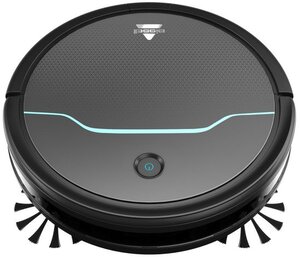
When it comes to dust collection, robot vacuums are not so much different from other vacuum cleaners. Robot vacuums are commonly designed with one or two spinning brushes and a rolling brush. These brushes work together to bring debris towards its center.
As the debris reach the center, the robot pulls the debris up to the waste bin. Before they reach the waste bin, the debris passes through a filter. Filters help the robot vacuum to hold more dust particles.
When the rubbish bin gets full, robot vacuums stop cleaning. For most robot vacuums, you will have to manually empty the bin. However, there are some that are automated. They can automatically dispose off the collected debris into a dust bin at a docking station.
Most robot vacuums are designed in a circular shape and are less than 5 inches tall. This helps them clean hard-to-reach spots such as corners and under the furniture. In fact, most of these have extension brushes at their edges. These allow robot vacuums to remove dust from corners and edges.
Some of these robot vacuums can be programmed to operate on a schedule. You can preset the time you want the device to clean on a daily basis. Besides, you do not need to be physically present to schedule them. Most high-end robot vacuums can be controlled through smartphones and remote controls.
In addition, some remote vacuums can map your room for effective and faster cleaning. These use infrared lasers to determine the size and shape of a room. However, these might cost a bit more than the average robot vacuum. For cheaper models, they follow boundary stripes that a user places on the floor.
Robot vacuums are designed with built-in sensors. Some sensors are facing down and others up. Down-facing sensors help the device detect the type of flooring so that it adjusts its power suction accordingly. Other sensors are used to detect cliffs and obstacles to avoid falls or knocks.
Do Robot Vacuums Work
There are several factors that show that robot vacuums really work. These factors are reflected in their abilities and how they work. Below we highlight what shows that robot vacuums can really work.
- They Can Clean Under the Furniture
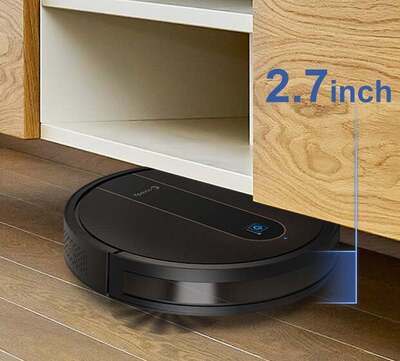
Robt vacuums are not hindered by the low-sitting furniture in your house. Most of them can clean under the table, bed, and sofa without knocking anything. In fact, most robots are designed with built-in sensors. These prevent them from knocking over objects. This means they can clean hard-to-reach areas under the furniture without causing any damages. This is a good indicator that robots can really work.
- Work Well in Tight Spaces
Robots can clean in tight spaces, thanks to their design. Most robot vacuums are designed in a circular shape with smaller brushes at their edges. This kind of design helps robot vacuums to collect dust or debris from tight spots like edges and corners. So, when cleaning at least every part of the room can be cleaned.
- They thoroughly collect and remove dust
Some robot vacuums have the ability to clean indoor dust. Most robot vacuums come with a built-in high-efficiency particulate absorbing (HEPA) filter. This type of air filter can capture up to 99.97% of particles as small as 0.3 microns. Robot vacuums can remove dust, dander, and other particles harboring on your floor. Moreover, with HEPA filter, it means the dust and other small particles collected cannot be release into the air.
- Clean Faster
These robots have memory and can record everything they do. Based on the information collected from previous movements, robot vacuums form a map of the room. By following this layout, cleaning becomes much faster. .
- They Can Clean both Bare Floors and Carpets
Robot vacuums can clean most types of floorings. They have the ability to adjust from one flooring to the other. They use sensors to detect the type of floor being cleaned and determine the energy levels to use. When cleaning bare floors, robot vacuums tend to use less energy. However, when on the carpet, they increase the energy due to roughness. Ultimately, regardless of the floor surface, robot vacuums will ensure no dirt settle there.
- Programmable
Being busy does not mean your house or room should remain dirty. These robot vacuums can be programmed to clean a room at a specific time. For instance, you can preset a specific area to be cleaned and when. The robot vacuum cleaner will follow the set program even if you are not around. This means your house will remain clean all the time.
- Long Operating Time
Robot vacuums can work for an extended time to ensure your room is clean at any moment. With just a single charge, robot vacuums can work between 30 minutes to 2 hours depending on the model. This run time is enough to clean average small and medium-sized homes.
What Makes Robot Vacuums Fail To Work
- Worn out Brushes
When the brushes on the robot vacuum wear out, the unit may not perform as expected. Brushes are responsible for collecting debris and bringing them towards the center. When they fail to work, it means the floor will not be cleaned effectively.
The side brushes are usually the first to wear out. It is advisable to always replace these brushes at least every six months.
- Sensor Malfunctioning
These robot vacuums are designed with sensors, which help them detect obstacles or floor types and adjust their performance accordingly. When the sensors get damaged the robot vacuum starts to fail to execute its tasks. For instance, sensors help the robot to detect obstacles. When they are not functioning, the robot will start knocking obstacles it comes across.
- Worn out filters
Filters, especially HEPA ones help trap small particles and prevent them from escaping into the air. When the filters are not functioning properly, the collected dust may find its way back into circulation. Therefore, when your robot vacuum is not working well, you may need to replace the filters.
Main Features to Lookout For When Buying a Good Robot Vacuum
Not every robot vacuum on the market can perform the functions discussed above. When looking for a robot vacuum that can work for you, you need to look out for specific features. Some of these features are discussed below.
- Scheduling Features
As discussed above, some robots are programmable. Since not all of them can be programmed, you need to check for the scheduling features. These features can help you schedule the time you want your robot vacuum to operate. Some of these features may include a timer.
You can preset the timer to determine when a robot vacuum should start and end cleaning. This is what makes robot vacuums work effectively. Otherwise, you will need to always supervise or frequently change settings for your robot.
- Battery Life and Recharge Time
These are also important features you need to check to ensure the robot vacuum can work. The battery life is so vital in the cleaning process. When the battery of a robot lasts for at least 30 minutes, it means it can clean a wider space before recharging. You should also consider getting a robot vacuum with a lithium-ion battery.
The recharge time is also as crucial as battery life. You will not want your robot vacuum to charge for long. This will certainly slow down the time it takes to complete cleaning. So, if you want a robot vacuum that can work better, look out for these features.
- HEPA Filter
Most robot vacuums can collect dust particles. However, not all can prevent this dust from escaping into the air. In this regard, you need to lookout for robot vacuums with HEPA filters.
HEPA filters can trap dust particles and prevent them from being released into the air.
- Intelligent Navigation System
What makes a robot vacuum work better is the ability to clean without close supervision. So, if a robot lacks an intelligent navigation system, you will need to keep a close eye on it. In this regard, when looking for a robot vacuum, you need to check for the navigation system.
The navigation system helps robot vacuums to clean around the house without knocking obstacles or falling off stairs.
Challenges You May Face with Robot Vacuums
If you already own a robot vacuum, there are challenges that you can expect. However, these challenges may not affect the general performance of robot vacuums. When you see your robot vacuum doing some of the things discussed below, you should not panic.
- Eating Power and Speaker Cables

Some robot vacuums eat cables that they may come across when cleaning. Robots that take cables as dirt can be deemed not good. But, they can be used when all cables are removed from the floor.
The good news is that there are robot vacuums designed with intelligent sensors. These sensors allow the robot vacuum to detect and avoid wires.
- Getting Stuck
Good robot vacuums have the ability to map your floor plan. But, there are robot vacuums that fail to map the flooring and end up getting stuck in some places. While most robot vacuums can get themselves out of a situation like this, it should not happen frequently.
If your robot vacuum gets stuck repeatedly, it may not be a good one.
- Noisy
If you need to get a robot vacuum that can clean your floor while you are asleep, think twice. These robot vacuums tend to be noisy. Even the quietest models make racket noise. However, although most robot vacuums make noise, we think the sound produced can be a bit bearable. This is especially considering the value that robot vacuums bring.
Conclusion
In summary, robot vacuums can really do good work. They are equipped with features that make their cleaning easier and faster. Robot vacuums can be quick in regular cleaning. However, since different models have varying suction power, the swiftness may also differ.
Robot vacuums can do good work under minimal supervision. You may pre-schedule a robot vacuum, and it will clean at the preset time.
While these robot vacuums are good, they are not a direct replacement for humans. There are areas that cannot be effectively cleaned due to mobility issues. For instance, if you have stairs in the house, they may not be cleaned.
Featured Posts
Latest Posts
- 5 Best Humidifier For COPD
- 5 Best Humidifiers For Greenhouse
- 5 Best Humidifiers For Electric Heat
- 5 Best Humidifiers For Pregnant Women
- 5 Best Humidifiers For Yoga Studio
- 5 Best Humidifiers For Eczema
- 5 Best Air Purifiers with Permanent Filters
- 5 Best Air Purifier With A Humidifier
- 5 Best Air Purifiers For Resin Printing
- 5 Best Air Purifiers for Eczema
- 5 Best Air Purifier With Fan Combo
- 5 Best Air Purifier For Lung Disease
- 5 Best Humidifiers For Essential Oils
- 5 Best Humidifiers for Elderly
- 5 Best Humidifiers For Lash Extensions
- 5 Best Humidifiers For Cough
- 5 Best Humidifiers For Fireplace
- 5 Best Humidifiers for Humidor
- 5 Best Humidifiers For Pets
- 5 Best Humidifiers For Weed
